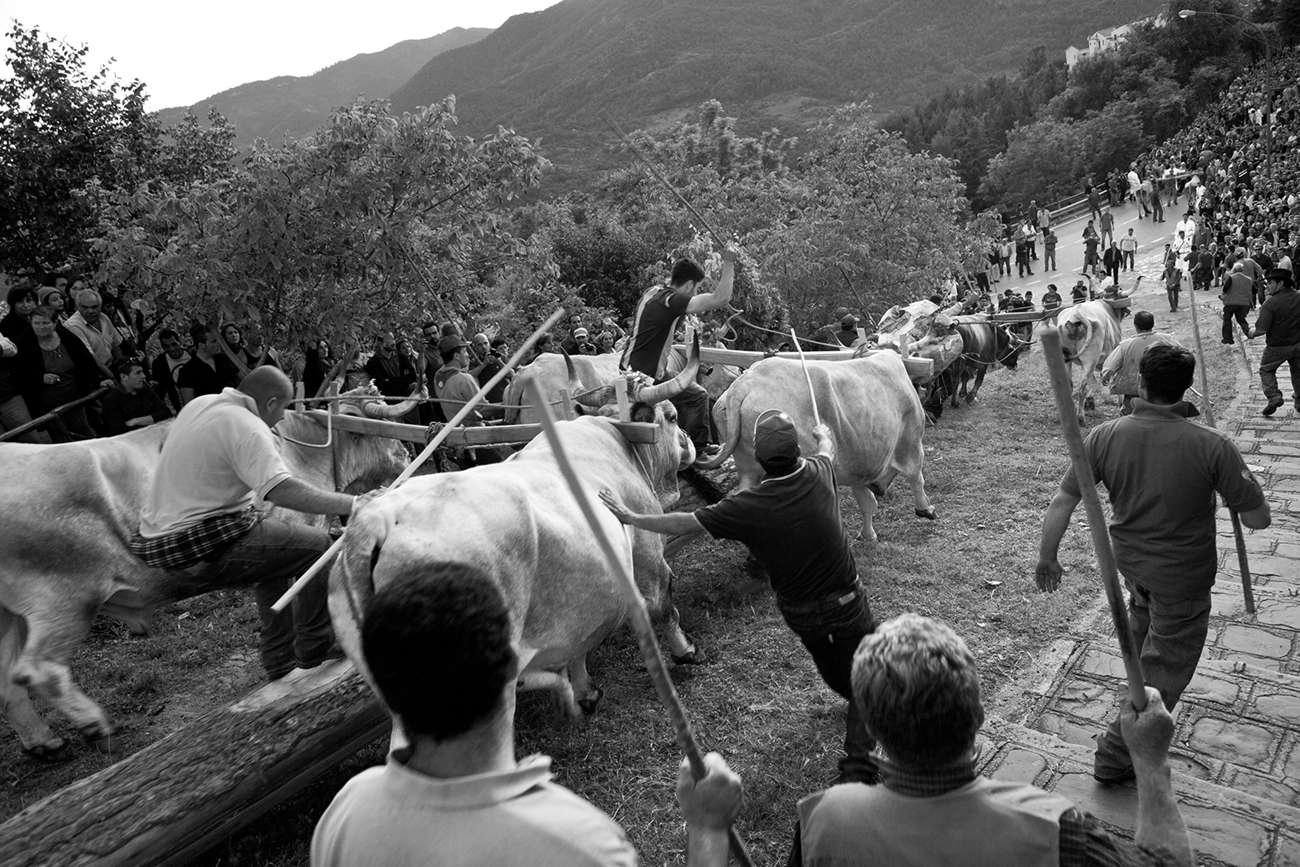

The Maggio of Accettura is a folk holiday of rural Europe, where ancient arboreal and pagan rituals achieve a symbiosis with the Catholic religion through the adoration of St. Giuliano Martire. It is celebrated at Pentecost in the town of Accettura, in the Basilicata region of Southern Italy, near to Matera.
There are two types of trees, two names for tree trunks, and two forests involved: an oak and a holly tree, and the names Maggio and Cima, representing the male and the female tree, felled in the Montepiano and Gallipoli forests. There are also two classes of participating townspeople: those who own animals and those who own nothing. The men set off in two different directions from the town to bring back the trees from the forests. The trees will be joined together and raised upright. Considering the work in greater detail, one notices the letters S.G.M. lightly initialed on some of the hoisting elements, serving as a talisman and a sign of devotion to St. Giuliano Martire. Another example of devotion is conveyed through the small children dressed as this saint.
What makes the Maggio of Accettura one of the most unique surviving European rituals is the full participation of both animals and people: sixty pairs of oxen are needed to transport and raise the Maggio, and dozens of men carry the Cima on their shoulders. Originating from Lombard-related traditions, this arboreal ritual symbolizes the link between earth and sky while evincing a sexual union through the joining together of two different types of trees but also represents the progression of nature’s cycles. It evolves from a primordial sense of identity left unaltered for centuries.
Finally, a “best boy” climbs the Maggio (ca. 3o meters) without protective gear, using only his hands and a rope. “Anything for devotion” say the townspeople.